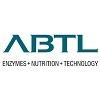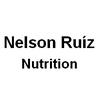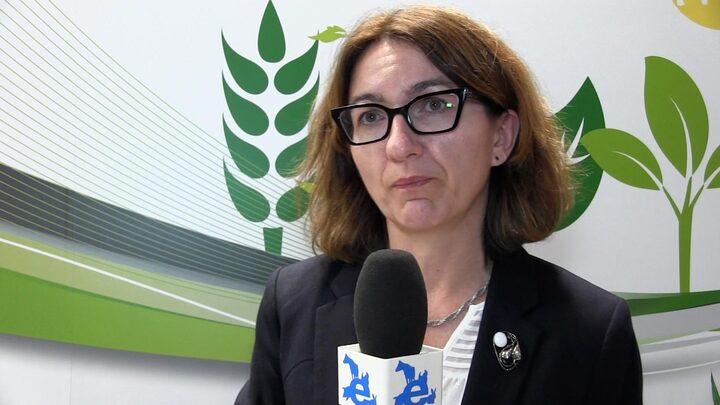Check out what is new in Poultry Industry
Find the best technical articles, forums, and videos on Poultry Industry at Engormix. Enter now and interact with the world's largest agricultural social network.
.jpg&w=3840&q=75)
Marc Saad (Liptosa) presents Coccilip, a natural, plant-based product for use in coccidiosis.
*Certain information associated with products, their composition and claims may be different depending on the geographical region and may not be applicable in all countries. Liptosa reserves the right to adapt to the requirements and legislation in each case.
The information and technical recommendations provided herein are based on Liptosa's current knowledge and experience.
Liptosa reserves the...
Comments : 0
Recommendations: 1
.jpg&w=3840&q=75)
Faazi Adam (Evonik Animal Nutrition) explains how automation and digitization are revolutionizing farming and feed production and how Evonik helps farmers and feed producers measure and enhance their sustainability performance....
Comments : 0
Recommendations: 0
Our Partners:
Featured comment:
A very insightful article — thank you for sharing such well-structured information on saponins in poultry nutrition. As someone keenly following the shift toward natural feed additives, it’s encouraging to see research-backed alternatives gaining traction, especially in the post-AGP (Antibiotic Growth Promoters) era. The versatility of saponins, especially those derived from Yucca schidigera and Quillaja saponaria, is quite fascinating. Their ability to act as natural...
Comments : 9
Recommendations: 2
Featured comment:

@M.C. Fernando R. Feuchter A. What is the first enzyme that acts on the feed once it enters the digestive system in chickens and what is the location? ...
Comments : 12
Recommendations: 7
Featured users in Poultry Industry

Shivaram Rao
Pilgrim´s
PhD Director Principal de Nutrición y Servicios Técnicos de Pilgrim’s Pride Corporation
United States
United States
.jpg&w=3840&q=75)
Poultry consultant Dr Balasundaram shares key opportunities, challenges, and sustainability strategies for poultry farmers in Hyderabad and Siddipet. From disease management to feed formulation, discover expert advice on thriving in India’s growing poultry industry....
Comments : 1
Recommendations: 0
.jpg&w=3840&q=75)
Dan Meagher, CEO of Novus International and new AFIA Board chair, discusses his new position, goals for 2025, and current trade issues, as well as his work alongside AFIA's President & CEO, Constance Cullman, to communicate the industry's needs and help shape government policies. ...
Comments : 0
Recommendations: 0
Featured comment:
Interesting the level of added SALT. Corn grain is low on sodium Na, but not wheat. Usually corn is sheaper than wheat, but wheat is highly digested. The state of Sonora Mexico usually has availabe wheat for feed rations. Not this year. ...
Comments : 3
Recommendations: 0
Featured comment:

@M.C. Fernando R. Feuchter A. You are absolutely right. Chickens are not stupid and they anticipate feed restriction. So, once feed is available they take advantage of it. After all, chickens are not concerned about feed conversion, they are concerned about survival. For this very reason they don't eat in the peak of the highest temperature as some poultry producers believe, they stay calm drinking water as needed and exposing to air movement if available, otherwise they will pant and open...
Comments : 44
Recommendations: 6
.jpg&w=3840&q=75)

Introducing Afla-V ONE: Fast, precise aflatoxin detection for complete feeds and pet foods
Suggested link
I. INTRODUCTION Chicken meat and egg production has been on the increase in all continents with the highest increases in Asia and South America (Mandal, 2010). High temperatures coupled with high humidity impose severe stress on birds and can cause huge economic loss. Such loss is due to reduced performance, immune suppression, and an increase in respiratory disease and mortality (Mandal, 2010). Exposure of chickens to high temperature also increases the induction of heat shock...
Comments : 0
Recommendations: 0
I. INTRODUCTION Bacillus-based probiotics have gained increased attention as alternatives to antibiotic growth promoters (AGP) to support broiler performance in systems aiming to reduce the use of antibiotics and maintain gut health and function. Combatting poor gut health and disease susceptibility in an era without antibiotics has been made increasingly difficult due to the increasing cost of commercial feed ingredients. This has forced some producers to use cheaper dietary...
Comments : 3
Recommendations: 0
I. INTRODUCTION Egg-associated Salmonella infection is a significant international public health problem. Internal contamination of eggs with S. Enteritidis has been the principal concern in North America and Europe, whereas external contamination with S. Typhimurium has been the predominant issue in Australia. Some strategies for controlling egg-borne Salmonella are designed to act with precision against epidemiologically important serovars, but others are applicable...
Comments : 0
Recommendations: 0
Editorial
This month, our comprehensive search captured 74 new publications in poultry nutrition from 61 journals (March 10th to April 10th, 2025, Web of Science), featuring top contributions from Poultry Science (6), Frontier in Veterinary Science(6), Animals (5), Veterinary Medicine and Science (5), etc. ( Download the complete list...
Comments : 0
Recommendations: 0


Mycotoxins semiannual survey of mycotoxin in feed in 2023 Taiwan - Second Half
Suggested link
I. INTRODUCTION With the current genetic focus being on longer laying cycles, there is a need to look for new ways of improving calcium metabolism in laying birds which are prone to osteoporosis in the latter stages of lay (Bain et al, 2016). Calcium pidolate (a highly soluble, absorbable salt with excellent gastrointestinal tolerance) has been around for 10-15 years in the commercial sector of the egg industry. Existing evidence suggests that this supplement has beneficial effects...
Comments : 0
Recommendations: 0
.jpg&w=3840&q=75)
R. Ramkutty, Chairman & Managing Director of Niswin Group of Companies, dives into decades of experience in the poultry feed industry, discussing key challenges like static agricultural growth, fluctuating raw material prices, and rising domestic demand. He also shares his vision for the future as India strides toward becoming a global economic leader....
Comments : 0
Recommendations: 0
I. INTRODUCTION Spotty Liver Disease (SLD) is characterized by the occurrence of multiple grey/white spots in the liver. It causes mortalities and reduction in egg output and is prevalent within the layer industry in Australia, especially within the free range sector of the industry (Grimes & Reece, 2011). The disease is less commonly found in barn and cage birds and parent stock (Scott, 2016). The recent identification of Campylobacter hepaticus, as the causative agent...
Comments : 0
Recommendations: 0
Featured comment:
Fluid Quip Technologies, LLC
@M.C. Fernando R. Feuchter A. Insect protein production has a very long way to go before it becomes a creditable source of protein for feed. We need to change the paradigm. When we start to consider insects as a viable bio-converter to transform waste streams into viable nutrient sources and the consider how these nutrients can be employed I believe is a more commercially viable proposition....
Comments : 16
Recommendations: 4
I. INTRODUCTION Supplementation of amino acids to reduce feather pecking behaviour and improve plumage condition has been previously studied and found to be successful (Savory, 1998, van Hierden et al., 2004). Feather eating behaviour performed by feather pecking birds suggests that feathers (predominately composed of keratin protein) may be consumed as an alternative source of amino acids, if digested. Methionine is an essential amino acid required for egg production and...
Comments : 0
Recommendations: 0
Featured comment:

@M.C. Fernando R. Feuchter A. Creatine is ONLY found in raw materials of animal origin; so yes, fish meal, meat and bone meal. The problem is variability; our analyses show variations of +/- 100% !! Reliance on creatine supply from such raw materials is therefore a real gamble...better to use a guaranteed source......
Comments : 3
Recommendations: 3
.jpg&w=3840&q=75)
Struggling with feed pellets breaking apart in water? Dealing with excessive dust in poultry, swine, or cattle feed? Magicoh Pellet Binder strengthens pellets, improves water stability, and enhances feed quality. Hear what Mr. Ronnick Fong (Hangzhou De Mark) has to say about it...
Comments : 0
Recommendations: 1
Corn remains the primary energy source in poultry diets. However, not all corn delivers equal nutritional value. Poor grain quality can significantly reduce its Metabolizable Energy (ME) for poultry, affecting both bird performance and production cost. Energy Loss Equation in Poultry Due to Poor-Quality Corn Barbarino and Rostagno (2001) developed an equation to estimate the Metabolizable Energy Lost (MEL) in poultry feed based on corn...
Comments : 0
Recommendations: 1



















.jpg&w=3840&q=75)


.jpg&w=3840&q=75)








